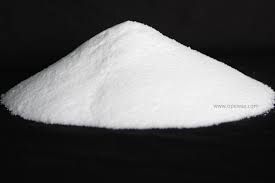The Capsaicin market is experiencing steady growth, with revenues projected to reach USD 421.78 million by 2030, reflecting a CAGR of 6.56% from 2023 to 2030. Capsaicin, the active component in chili peppers, is a compound that has sparked considerable interest across various industries, from pharmaceuticals to food and beverages. Known for its heat-inducing properties, capsaicin is not only a key ingredient in spicy foods but also a significant compound in pain relief medications, cosmetics, and even pest control products. The capsaicin market has witnessed substantial growth over the past few years, driven by increasing consumer demand for natural and organic products, the expanding food industry, and the rising prevalence of chronic pain conditions. This article delves into the trends, drivers, challenges, and future prospects of the capsaicin market.
Browse the full report at https://www.credenceresearch.com/report/capsaicin-market
Market Drivers
1. Growing Demand in the Food Industry
One of the primary drivers of the capsaicin market is its widespread use in the food industry. The global appetite for spicy foods has been on the rise, particularly in regions such as Asia-Pacific and Latin America, where capsaicin is a staple in traditional cuisines. Additionally, the increasing popularity of hot sauces and spicy snacks in Western countries has further bolstered demand. Capsaicin is used not only to add flavor but also as a preservative, owing to its antimicrobial properties.
2. Rising Applications in Pharmaceuticals
Capsaicin’s role in pain management has significantly contributed to market growth. It is used in topical pain relief creams and patches, particularly for conditions like arthritis, neuropathic pain, and post-surgical pain. The compound works by desensitizing sensory neurons, thereby reducing the sensation of pain. With the increasing prevalence of chronic pain conditions, especially among the aging population, the demand for capsaicin-based products in the pharmaceutical sector is expected to continue growing.
3. Increasing Use in Cosmetics and Personal Care
The cosmetics and personal care industry has also embraced capsaicin, leveraging its properties to create products that promote blood circulation and enhance skin texture. Capsaicin is found in anti-aging creams, hair growth serums, and cellulite treatment products. The trend towards natural and organic ingredients in cosmetics has further propelled the demand for capsaicin, as consumers increasingly prefer products with fewer synthetic chemicals.
4. Growing Interest in Natural Pesticides
Capsaicin is being recognized as an effective natural pesticide, offering an environmentally friendly alternative to chemical pesticides. It is used to deter pests in agricultural practices and in household pest control products. As awareness of the environmental impact of synthetic pesticides grows, the adoption of capsaicin-based solutions is likely to increase.
Market Challenges
1. Regulatory Hurdles
Despite its benefits, the capsaicin market faces challenges related to regulatory approvals. In the pharmaceutical and food industries, strict regulations govern the use of capsaicin, particularly concerning its concentration in products. These regulations vary by region and can pose a barrier to market entry for new players.
2. Health Concerns
While capsaicin is generally safe for consumption and topical application, excessive use can lead to adverse effects, such as skin irritation, gastrointestinal issues, and respiratory problems. These health concerns can limit its use, particularly in food products where consumer safety is paramount.
3. High Production Costs
The extraction and purification of capsaicin are complex processes that require significant investment in technology and equipment. This contributes to the high cost of capsaicin, which can be a deterrent for some manufacturers, especially in price-sensitive markets.
Future Prospects
The future of the capsaicin market looks promising, with several growth opportunities on the horizon. The increasing focus on natural and sustainable products is expected to drive demand across various industries. Moreover, ongoing research into the therapeutic benefits of capsaicin could lead to the development of new pharmaceutical products, further expanding its market potential.
Key Players
- Sabinsa Europe GmbH
- Henan Bis-biotech Co., Ltd.
- Plamed
- Lonza
- Bayer
- Paparika Oleoas
- Ramdev Food Products
- Virupaksha
- Nufarm
- Alps Pharmaceutical
- Great Forest Biomedical
- Others
Market Segmentation
- By Application
- Food Industry
- Pharmaceuticals
- Agriculture
- Cosmetics and Personal Care
- Industrial Applications
- Others
- By Type
- 95% Purity Capsaicin
- Other Purity Levels
- Natural Capsaicin
- Synthetic Capsaicin
- Customized/Functional Capsaicin
- Natural-Based Capsaicin
- By End-Users
- Food & Beverage Industry
- Pharmaceutical Industry
- Agricultural Industry
- Cosmetics and Personal Care Industry
- Industrial Applications
- Others
- By Price Range
- Low
- Medium
- High
- By Region
- North America
- US
- Canada
- Mexico
- Europe
- Germany
- France
- UK.
- Italy
- Spain
- Rest of Europe
- Asia Pacific
- China
- Japan
- India
- South Korea
- South-east Asia
- Rest of Asia Pacific
- Latin America
- Brazil
- Argentina
- Rest of Latin America
- Middle East & Africa
- GCC Countries
- South Africa
- Rest of Middle East and Africa
- North America
Browse the full report at https://www.credenceresearch.com/report/capsaicin-market
About Us:
Credence Research is committed to employee well-being and productivity. Following the COVID-19 pandemic, we have implemented a permanent work-from-home policy for all employees.
Contact:
Credence Research
Please contact us at +91 6232 49 3207
Email: sales@credenceresearch.com
Website: www.credenceresearch.com









